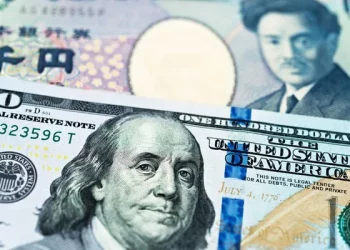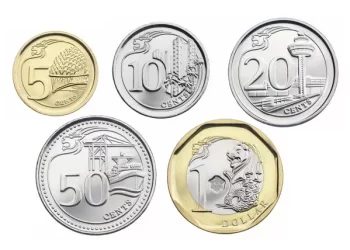In the vast and dynamic realm of foreign exchange markets, the pound to dollar ratio, represented by GBP/USD, stands as one of the most closely watched currency pairs. As the exchange rate between the British pound sterling (GBP) and the United States dollar (USD), it not only reflects the relative economic strength of the United Kingdom and the United States but also significantly impacts international trade, investment flows, and global financial markets. Understanding this ratio is crucial for investors, traders, and policymakers alike, as its fluctuations can create both opportunities and challenges in the global economic landscape.
Basics of the Pound to Dollar Ratio
What Exactly is the Pound to Dollar Ratio
The pound to dollar ratio, simply put, is the value of one pound in terms of dollars. For instance, if the GBP/USD exchange rate is 1.2890, it means that one British pound can be exchanged for 1.2890 US dollars. This ratio is not fixed; rather, it is determined by the forces of supply and demand in the foreign exchange market, which is the largest and most liquid financial market globally, with trillions of dollars traded daily.
The Significance of the Currency Pair
Economic Indicator: The GBP/USD ratio serves as a barometer of the economic health of both the UK and the US. A rising ratio (more dollars per pound) may indicate that the UK economy is strengthening relative to the US economy. This could be due to factors such as higher economic growth, lower unemployment rates, or more favorable inflation figures in the UK compared to the US.
Trade Impact: It has a direct impact on international trade between the two countries. A stronger pound relative to the dollar makes British exports more expensive for American consumers, potentially reducing UK exports to the US. Conversely, it makes US imports cheaper for British consumers, increasing imports from the US.
Historical Overview of the Pound to Dollar Ratio
Long – Term Trends
Over the past few decades, the pound to dollar ratio has experienced significant fluctuations. In the post – Bretton Woods era, after the collapse of the fixed – exchange – rate system in the early 1970s, the GBP/USD rate began to float freely. In the 1980s, due to the UK’s economic reforms under Margaret Thatcher and the US’s economic policies, the ratio witnessed substantial swings.
During the 2008 global financial crisis, the pound depreciated significantly against the dollar. The UK, with its large financial sector, was severely hit by the crisis, leading to a loss of confidence in the pound. In contrast, the dollar, as a safe – haven currency, strengthened.
Recent Developments
In 2025, the GBP/USD ratio has continued to be influenced by various factors. As of April 6, 2025, the exchange rate stands at 1.2890, with a daily change of -0.0206 (-1.57%). Over the past month, it has traded in a range between 1.2852 and 1.3115.
Factors Influencing the Pound to Dollar Ratio
Economic Fundamental Factors
GDP Growth: The economic growth rates of the UK and the US play a crucial role. Higher GDP growth in the UK relative to the US often leads to an appreciation of the pound. For example, if the UK experiences robust growth in its service and manufacturing sectors, it attracts foreign investment, increasing the demand for the pound and driving up its value against the dollar.
Inflation Rates: Inflation can erode the purchasing power of a currency. If the inflation rate in the UK is lower than that in the US, the pound may strengthen. Central banks in both countries closely monitor inflation and adjust their monetary policies accordingly, which in turn affects the exchange rate.
Employment Data: Low unemployment rates in a country indicate a healthy economy. In the UK, a decline in unemployment may lead to increased consumer spending, economic growth, and a stronger pound. Similarly, in the US, positive employment data can impact the value of the dollar.
Monetary Policy Factors
Interest Rates: Interest rates set by the Bank of England (BoE) and the Federal Reserve (Fed) are major determinants of the GBP/USD ratio. When the BoE raises interest rates, it attracts foreign investors seeking higher returns on their investments. This increases the demand for the pound, causing it to appreciate against the dollar. Conversely, if the Fed raises rates, the dollar may strengthen.
Quantitative Easing (QE): Central banks may implement QE programs to stimulate the economy. In the aftermath of the 2008 financial crisis, both the BoE and the Fed carried out QE. When a central bank engages in QE, it increases the money supply, which can lead to currency depreciation.
Political and Geopolitical Factors
Domestic Politics: In the UK, political events such as the Brexit process had a profound impact on the pound. The uncertainty surrounding Brexit led to significant volatility in the GBP/USD ratio. Similarly, in the US, political developments, such as changes in government policies, can affect the dollar.
Geopolitical Tensions: Global geopolitical events, such as trade disputes, military conflicts, and international relations, can also influence the pound to dollar ratio. For example, if there are trade tensions between the US and the UK’s major trading partners, it can impact the UK’s economy and the value of the pound.
Analyzing the Pound to Dollar Ratio
Technical Analysis
Chart Patterns: Traders often use chart patterns to analyze the GBP/USD ratio. Patterns such as head and shoulders, double tops, and double bottoms can provide signals about potential future price movements. For example, a head and shoulders pattern may indicate a potential downward trend in the ratio.
Technical Indicators: Indicators like the Relative Strength Index (RSI), Moving Average Convergence Divergence (MACD), and Bollinger Bands are commonly used. The RSI measures the relative strength of a currency pair, indicating whether it is overbought or oversold. A reading above 70 may suggest that the pound is overbought against the dollar, potentially leading to a price correction.
Fundamental Analysis
Economic Calendar: Traders and investors closely follow economic calendars to stay informed about upcoming economic data releases in the UK and the US. Key events include GDP announcements, inflation reports, and central bank meetings. For example, a better – than – expected UK GDP report may lead to an increase in the GBP/USD ratio.
News and Sentiment Analysis: News from various sources, including financial news outlets and government announcements, can impact market sentiment. Positive news about the UK economy may boost confidence in the pound, while negative news about the US economy may weaken the dollar.
Impact of the Pound to Dollar Ratio
On International Trade
Export – Import Dynamics: As mentioned earlier, the GBP/USD ratio directly affects the competitiveness of UK and US exports and imports. A weaker pound makes UK exports more competitive in the US market, potentially increasing UK exports. On the other hand, a stronger pound may lead to an increase in imports from the US.
Trade Balance: Fluctuations in the ratio can impact the trade balances of both countries. A significant depreciation of the pound may help the UK improve its trade balance by increasing exports and reducing imports.
On Investment Decisions
Foreign Direct Investment (FDI): The GBP/USD ratio influences FDI flows between the UK and the US. A stronger pound may make the UK a more attractive destination for US investors, as their investments will have more purchasing power in the UK.
Portfolio Investment: Investors holding portfolios of UK and US assets need to consider the exchange rate risk. Fluctuations in the GBP/USD ratio can significantly impact the returns on their investments.
Trading the Pound to Dollar Ratio
Trading Strategies
Day Trading: Day traders aim to profit from short – term price movements in the GBP/USD ratio. They use technical analysis tools to identify entry and exit points within a single trading day. For example, they may look for short – term breakouts in the price chart.
Swing Trading: Swing traders hold positions for a few days to weeks, aiming to capture medium – term price trends. They analyze both technical and fundamental factors to identify potential trading opportunities.
Long – Term Investing: Long – term investors may take positions based on their outlook for the long – term economic fundamentals of the UK and the US. They are less concerned with short – term price fluctuations and focus on the overall trend of the GBP/USD ratio.
Risks Associated with Trading
Exchange Rate Risk: The most obvious risk in trading the GBP/USD ratio is the potential for significant exchange rate fluctuations. These fluctuations can lead to substantial losses if the market moves against the trader’s position.
Leverage Risk: Many traders use leverage to increase their trading positions. While leverage can amplify profits, it also magnifies losses. A small adverse movement in the GBP/USD ratio can result in significant losses for highly leveraged traders.
Conclusion
The pound to dollar ratio is a complex and dynamic metric that plays a crucial role in the global financial system. It is influenced by a wide range of economic, political, and geopolitical factors. Understanding these factors and using appropriate analytical tools can help investors, traders, and policymakers make informed decisions. Whether it’s for international trade, investment, or speculation, the GBP/USD ratio will continue to be a key indicator in the ever – changing landscape of foreign exchange markets. As the global economy evolves, so will the factors affecting this ratio, making it essential for market participants to stay informed and adapt to new developments.
Related topics























